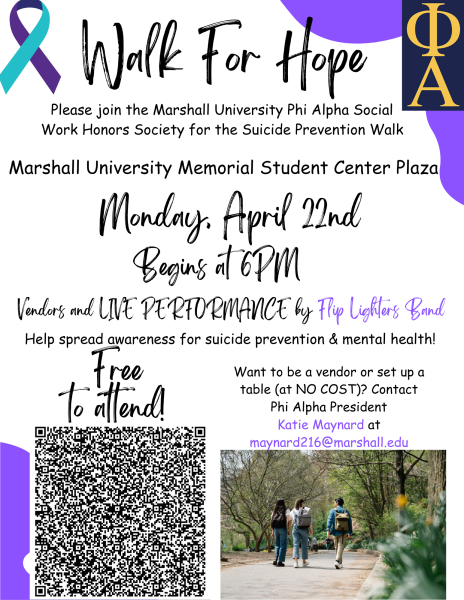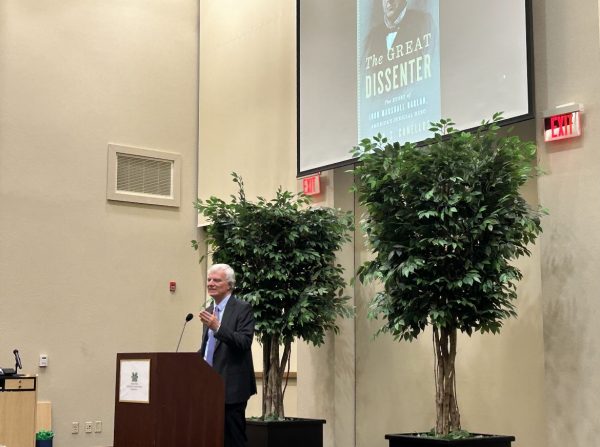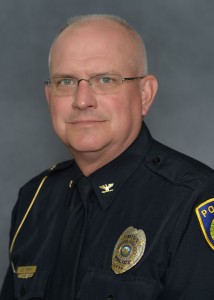Exercise science department develops new fitness test
More stories from Elayna Conard
Hunter Perry, exercise science graduate student administers a step test to senior Eric Riley on Friday.
Students of Marshall’s Exercise Science department developed a new test to determine how well oxygen powers the body.
Former exercise science student Tyler Gossett initiated the step test validation study after creating the new test. The step test validation study compares the step test to the gold standard VO2 maximum test. The standard VO2 max test requires the athlete or patient to exert strenuous effort while running or walking on an inclined treadmill.
“It [VO2] tests how well a person’s body can utilize oxygen per kilogram of body weight that a person weighs,” said Hunter Perry, exercise science graduate student.
Oxygen is a vital source of energy for the body, and the test determines if a person’s heart rate can stabilize and endure fitness activities.
The treadmill, breathing device and computer system used for a VO2 max test can cost upwards of $60,000. The step test is much more cost effective and can be used by health care providers in a clinical setting rather than just an exercise facility.
Senior exercise science student Eric Riley is one of the students who works the exercise physiology lab on a regular basis.
“Our step test is four minutes. It’s quick, it’s easy, and it’s very assessable,” Riley said.
The simplicity of the step test means doctors and health care providers can more easily determine a patient’s fitness level. In order for the step test to become as common as the standard V02 max test, the test must be validated.
Former exercise science student Tyler Gossett developed the step test in September 2015 using a few materials. The step test consists of four different leveled steps, a stopwatch, a heart rate monitor and the sound of a beat similar to a drum. The athlete or patient begins stepping on the lowest level step for 30 seconds to the beat of the drum.
After 30 seconds, their heart rate is recorded and they move on to the next step. After completing this same procedure for all four steps, the test is done in four minutes. The final heart rate from the last step projects what the VO2 max test can take as much as 30 minutes to project.
As in many research studies, the exercise science department is asking for participants to take both the VO2 max test and the step test so the results can be compared. Validation that the step test projects the same results as the VO2 max test would verify that the test can be used in clinical settings in place of the VO2 max test.
The importance of accessibility of the step test is because of the development of exercise as medicine. The American College of Sports Medicine has made it their mission to integrate scientific research that provides a practical application of sports medicine into the spectrum of health and wellness for all individuals.
With the evolvement of health and wellness, a person’s fitness level will soon be one of the vitals a physician checks as regularly as blood pressure or heart rate. Clinics and offices are not equipped with expensive machines to perform a fitness assessment. Therefore, the step test allows more facilities to perform a fitness test.
The gold standard VO2 tests the amount of oxygen a person’s body is able to take in to pump their heart and send energy to the cells. The test exposes valuable information about a person’s heart, lungs, and muscle activity.
Because the step test is simple, cost efficient, and effective, virtually anyone with a stop watch and the steps can perform the test in as little as four minutes. In addition to measuring fitness level, VO2 is an effective tool to measure mortality and morbidity.
Terry Shepherd, Ph.D., coordinator of the exercise science graduate program and director of the exercise physiology lab, says the step test is the tool most easily implemented into doctors’ offices and medical facilities so fitness level can become a vital that is routinely tested.
“We would like to be there with our test and ready to go should physicians want to use it,” Shepherd said.
Shepherd and the exercise science department are doing a concurrent study with this step test study to test the feasibility of implementing the test into doctors’ office.
This study is equally as important because it will determine whether doctors think it is useful in their practice and whether patients mind the test.
Shepherd said the test is both efficient and time-sensitive.
“Doctors are not going to buy into anything that is complicated and takes a lot of time,” Shepherd said.
In the next few weeks, the step test will be placed in doctors’ offices around the Tri-State area to evaluate how well the test works in this type of setting.
For participating in the step test study, Marshall students and the Huntington community receive a free step test, free V02 max test and free Bod Pod composition. These tests together can cost up to $300 in other settings.
Senior exercise science student Seth Morgan said the test is beneficial for students and staff during this developmental phase.
“The VO2 and the step tests tell you your fit level basically and students contribute to an up and coming study developed by Marshall students,” Morgan said.
The step test validation study is given on level C of the Cam Henderson center in the Exercise Physiology lab. The study will continue until September 30, 2016. To become a participant, call the lab at 304-696-3186.
Elayna Conard can be contacted at [email protected].
Your donation will help continue the work of independent student journalism at Marshall University. If you benefit from The Parthenon's free content, please consider making a donation.








Clark Van Hekken • Feb 19, 2016 at 2:49 pm
So to participate, I’d have to drive down to West Virginia right? I had to Google the location of Marshall University. Too far for me.